
Domain of Instructional Design


Instructional Design is defined as “the process of specifying conditions for learning” (Seels & Richey, 1994, p. 30).
Instructional Design is focused on the systematic process of learning. According to Dick and Carey, a systems point of view of learning is a process in which every component: teacher, learners, materials and learning environment work symbiotically toward the goal of successful learning. A system is simply a “set of interrelated parts, all of which work together toward a defined goal” (Dick & Carey, 2001, p. 2-3). This view takes into consideration that all parts of any given system work together with equal credence toward a common goal. Each part of the system has its own role and is equally as vital to the functioning of the system as whole. There are several models that an Instructional Designer may follow when designing instruction. The models as well as the processes embodied in all of the models are referred to as Instructional Systems Development or (ISD). (Dick & Carey, 2001, p. 4)
During the Instructional Design process the designer will ask and answer the following questions:
Instructional Design is divided into four sub-domains or components that make up the design processes.
The first sub-domain, Instructional System Design, is defined as “an organized procedure that includes the systematic process of analyzing, designing, developing, implementing and evaluating instruction” (Seels & Richey, 1998, p. 31). This step-by-step process of designing instruction can be illustrated in the Analysis, Design Development, Implementation, and Evaluation model as seen in the visual below. The ADDIE model provides a general framework, however, for other, more specific, Instructional Design projects instructional designers can choose from various models. While offering new steps and process, the majority of these models demonstrate the systematic processes of designing instruction.
(Seels, B. & Glasgow, Z., 1998, p. 13).
ADDIE Model
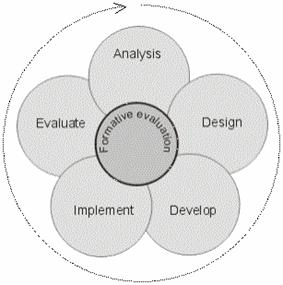
Figure 3: ADDIE Model
Image adopted from:
www.up.ac.za/academic/soba/SAAPAM/vol36n3/clapper.htm
The Instructional design process is systematic and is a result of a comprehensive and thorough analysis. The analysis process will guide every aspect of the design product. Analysis is a crucial phase of the Instructional Design Processes. This phase may also be referred to as a Needs Assessment. During the Needs Assessment or analysis information about the learners, learning context and performance problem will be gathered and analyzed. This analysis information will allow the designer to identify the instructional goals. (Dick & Carey, 2001) The analysis phase consists of a comprehensive set of process and sub-steps in and of itself. However, it is a component of the instructional design process, therefore is a phase that is incorporated in all instructional design models.
There are many models that a designer may utilize to guide his/her analysis. A designer may choose a model to follow while considering: the specifics of the performance problem, the context of problem, the learners and any other pertinent information that may impact the development process. There are some differences evident among various instructional design models. However, in comparing and contrasting various phases it is apparent that the primary steps are consistent across all Instructional analysis models.
Figures 4, 5 and 6 are examples of Instructional Design models:
Reiser & Dick ISD Model

Figure 4: Reiser & Dick ISD Model
Image adopted from Reiser and Dick:
http://www.ic.arizona.edu/ic/edp511/fig1_isd.gif
Smith & Ragan ISD Model
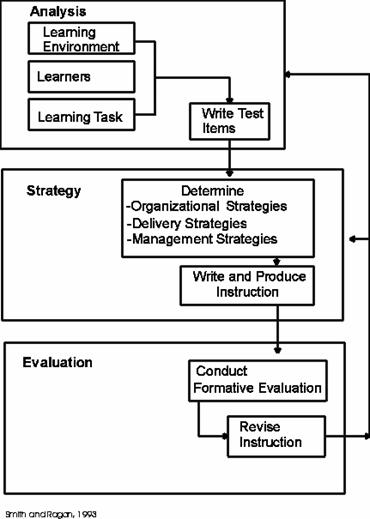
Figure 5: Smith & Ragan ISD Model
Image adopted from Smith and Ragan:
http://www.acs.ucalgary.ca/~edtech/688/getstart.htm
Seels & Glasgow ISD Model
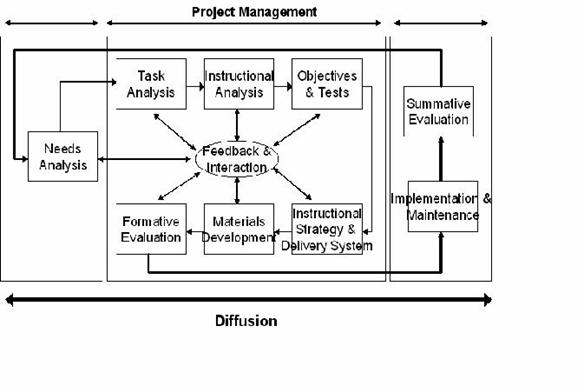
Figure 6: Seels & Glasgow ISD Model
Image adopted from Seels and Glasgow:
http://en.wikibooks.org/wiki/Instructional_Technology/Seels_and_Glasgow_Model_II
A widely accepted and implemented Instructional Systems Design Models is the Dick and Carey model of Instructional Design. An important part of this model is analysis phase in which the designer identifies goals, conducts instructional analysis which consists of learner, environmental and task analysis and generates learning or performance objectives for the instructional design phase.
Dick & Carey Design Model
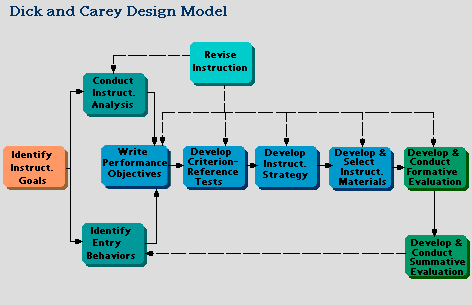
Figure 7: Dick & Carey ISD Model
Image adopted from:
http://www.dean.usma.edu/math/activities/cape/Instructional_Models/dc_design.html
As seen in Figure 7, the Dick and Carey model demonstrates that Instructional Designers engage in analysis prior to: designing and developing instruction, evaluating, revising, implementing and evaluating the instruction again. Similar to other Instructional Design models, the Dick and Carey model follows the general guidelines of the ADDIE model. This model is comprehensive and specific in that there are sub-steps of each phase of the ADDIE model that are more detailed.
Another Instructional Systems Design Model is the Kemp, Morrison and Ross Model (see Figure 8) of Instructional Systems Design. As seen below the Kemp, Morrison and Ross model presents the instructional design process as a circular process . This implies that the design processes do not function autonomously of one another. As evidenced by the format and organization of the model, each step is not only dependent upon the step before it and impacts the step after it , but at the same time they are impacted by the outer-ring processes. This model contains the steps of the design processes that are generally outlined in the ADDIE model.
Kemp, Morrison & Ross ISD Model
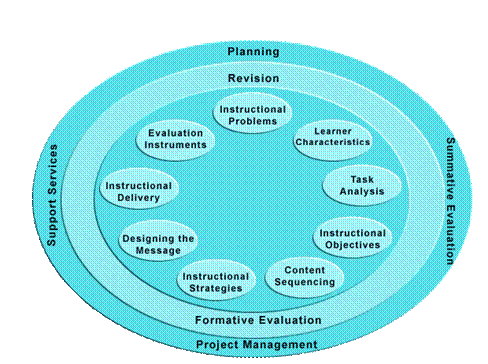
Figure 8 : Kemp, Morrison, & Ross ISD Model
Image adopted from:
http://web.ics.purdue.edu/~baterden/Model2.htm
Although various Instructional Design Models are available for use, the instructional designer often follows the model that best suits the project specifications. Some instructional designers may choose to combine elements from more than one model. The primary concern of the designer is to use the model that will serve to solve the performance problem and is based on needs of the learners and the conditions.
Message Design:
Message design is the format in which the instructional message is relayed to the learner. It involves “planning for the manipulation of the physical form of the message” (Seels and Richey, p. 31).
Message design is the impetus for conveying the content of the instructional objectives. In essence, the message design will include the information that the learner will learn. However, there is much more to message design than simply writing the content. During every instructional design process some instructional messages are designed and delivered to the learner. Message design is an extremely deliberate combination of instructional theory paradigms and graphic design principles. Message design includes the processes of planning what the instructional message will include as well as what it looks like and how it is delivered: text, audio, video, and/or multimedia, etc.
In Instructional Design processes, message design is often driven by the results of the learner, environmental and contextual analyses. Designers try to infuse the multimedia message with the information derived from the analyses in order to produce and develop the most effective instructional messages to include in the product. Instructional designers often employ basic principles and theories of designing instructional messages. For example, a designer may consider the Three Assumptions of a Cognitive Theory of Multimedia Learning as described by Richard Mayer (Mayer, 2001) (See Table 1).
Table 1: Mayer’s Three Assumptions of Multimedia Learning
Assumption |
Description |
Implication in ISD |
Dual Channels |
Learners have separate channels for processing visual and auditory information |
Information input, storage, and recall is enhanced by presenting information in both visual and verbal form. |
Limited Capacity |
Learners are limited in the amount of information that they can process in each channel at one time |
Images and words should be coupled when deemed to be an effective. They should serve to send the same message. Designers should not present too much verbal or visual information to a learner. Also designers should not present too much information for the learner to store in their working memory while learning; message design can impact this. |
Active Processing |
Learners engage in active learning by attending to relevant incoming information, organizing selected information into coherent representations, and integrating mental representations with other knowledge |
Designers should design instructional messages specifically for the ease of the learner to: select, organize and integrate the information by strategically using:
|
Instructional Strategies:
Instructional Strategies may be considered the “how to” or the guide on the manner in which the content will be developed, written and delivered. The strategies will be considered and planned according to: learner characteristics, learning outcomes and instructional goals. Therefore, the instructional strategies will vary according to each instructional design project. Information from instructional analysis will guide decision making in choosing instructional strategies for every instructional design project. Additionally, a designer will use this information to choose an instructional model that will meet the needs of the learners as well as the instructional goals.
In 1965, Robert Gagne published The Conditions of Learning which outlined the relationship between learning objectives and appropriate instructional design strategies . As an instructional theory, Gagne’s Conditions of Learning theory is based on cognitive information processing theories of learning. The model assists designers in designing instructional events particularly selection of instructional strategies. The basic principles of Gagne’s work should be considered and utilized during the design and development phase of Instructional Design. The general principles that are useful for instructional designers are:
Gagne identifies five categories of learning: Illustrates learning outcomes as well as the instructional strategy that can be implemented to meet the outcome.
Table 2: Gagne’s Taxonomy of Learning Outcomes & Conditions of Learning
Gagne’s Taxonomy of Learning Outcomes & Conditions of Learning |
||
Taxonomy of Learning Outcomes |
Example |
Critical Learning Conditions |
Verbal Information |
Stating previously learned materials such as facts, concepts, principles, and procedures, e.g., listing the seven major symptoms of cancer |
|
Intellectual Skills : Discriminations, Concrete Concepts, Defined Concepts, Rules, Higher Order Rules |
Discriminations: Distinguishing objects, features, or symbols, e.g., hearing different pitches played on a musical instrument Concrete Concepts: Identifying classes of concrete objects, features, or events, e.g., picking out all the green M&Ms from the candy jar Defined Concepts: classifying new examples of events or ideas by their definition, e.g., noting "she sells sea shells" as alliteration Rules: Applying a single relationship to solve a class of problems, e.g., calculating the earned run averages (ERA) of the Atlanta Braves Higher Order Rules: Applying a new combination of rules to solve a complex problem, e.g., generating a balanced budget for a state organization |
|
Cognitive Strategies |
Employing personal ways to guide learning, thinking, acting, and feeling, e.g., devising a corporate plan to improve customer relations |
|
Attitudes |
Choosing personal actions based on internal states of understanding and feeling, e.g., deciding to exercise daily as a part of preventive health care |
|
Motor Skills |
Executing performances involving the use muscles, e.g., doing a triple somersault dive off the high board |
|
http://www.my-ecoach.com/idtimeline/theory/gagne.html
Information from: Driscoll, M. (1991) Psychology of Learning for Instruction. Allyn and Bacon.
There are various Instructional Design models that can be utilized in planning and applying instructional strategies . One of the most simplistic but valuable instructional strategies is the Select Organize Integrate (SOI) model proposed by Richard Mayer (Mayer, 2001). Mayer’s SOI model can be implemented for any type of learning outcome. This model includes:
In pragmatic terms and from the learner’s perspective, selecting relevant information will include-choosing to attend to clearly important information to learn. This may be indicated by bold-faced, underlined, highlighted information or any other “indicator” that will say to the learner-“this is important”. Organizing information will include how the learner perceives the information that they are learning. In what fashion is the information presented to the learner? How is the information structured? This strategy may include an outline format or if the message is auditory, it may include a deliberate pause. The integration of information is essentially, how the learner “puts it all together”. This should include intentional and planned connections established by the designer. In other words, the designer should ensure, based on analysis data, that the content not only connects in and of itself but also that the learner connects the newly learned information with prior knowledge. Connections may be established in a number of ways, according to the specific design product. One example is using analogies. These connections or integration of information will ensure learning takes place as instructional messages with no connections are just words.
In Instructional Design processes the ARCS Model (Keller, 1987) may also be used to apply the basic principles and steps of making connections with the learners. The model is designed to increase learner motivation as without learner motivation the presentation of information is likely to be irrelevant. The ARCS Model of Learner Motivation (see Figure 9) demonstrates the general steps or guidelines that could be followed in considering the instructional strategies. The instructional strategies should be chosen for an instructional design product to improve learner motivation.
ARCS Model of Motivation
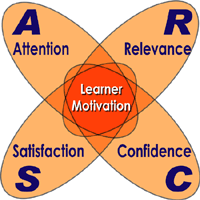
Figure 9: ARCS Model of Motivation
Image adopted from:
http://ausweb.scu.edu.au/aw04/papers/refereed/lund/paper.htm
Learner Characteristics:
The learner characteristics are the driving force behind all instruction. If the learner characteristics are not accurately, thoroughly and effectively analyzed the instruction may be irrelevant and ineffective. Learner characteristics should include any and all information that is relevant to the instructional design project. Typically, the following information will be utilized as a starting point for the learner analysis: age, socioeconomic background, entry behaviors, prior knowledge, attitude toward content, attitude toward delivery system, academic motivation for instruction, education and ability levels, learning preference/style, and attitude toward organization. This information may be adequate to begin an instructional design project. However, during the instructional analysis, the designer should determine if any other learner information would be pertinent and use that information as well. An instructional design project and product should always include some degree of learner analysis as effective instruction is learner centered.
Historically, Pedagogy or teaching has been content and teacher centered. However, the paradigm shift in education has resulted in moving from a more teacher centered approach of instruction to a more learner centered approach. Today, pedagogy is the art, science, or profession of teaching (Merriam Webster Dictionary, 2006).
In 1973, Malcolm Knowles published the book, The Adult Learner: A Neglected Species in which Andragogy was originally defined as "the art and science of helping adults learn". It has since shifted to a more expansive meaning. The term now refers to learner-focused education for people of all ages. A straightforward depiction of Andragogy is to consider the learner at the center and the learning content surrounding them (see Figure 10).
Visual Comparison: Andragogy & Pedagogy
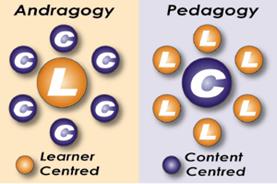
Figure 10: Visual Comparison: Andragogy & Pedagogy
Image adopted from:
http://ausweb.scu.edu.au/aw04/papers/refereed/lund/paper.htm
An instructional designer that approaches instructional design from a learner centered point of view will consider the following general principles of Andragogy that are related to learners and their characteristics:
Learners Need:
Introduction About Me History & Definition Domains Competencies Artifacts Resume References Works Cited Glossary